Features
Professor Jonathan Herring’s new book, Law and the Relational Self, imagines how we could create laws that foster caring relationships, instead of breaking them apart.
Professor Herring is not your average law professor. His background is typical: studied Law at Hertford College, trained as a solicitor, did his BCL, then later went into education. But it’s not every solicitor or professor who ends up specialising in relationships.
He wrote a book called How to Argue, which was featured in newspapers as a guide to navigating those tricky conflicts in relationships. Late last year he hit the papers again, referenced as an argument expert in pieces about discussing Brexit and how to avoid doing the same at Christmas.
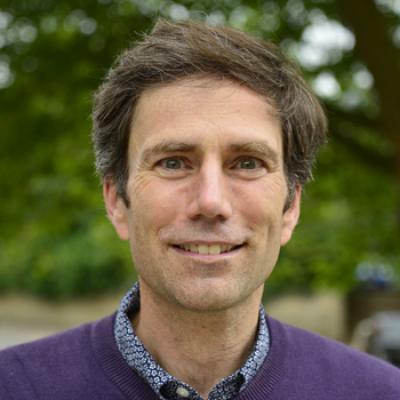
(He also gave a very entertaining talk on Can Law Be Fun, which is worth your time once you’ve finished reading this.)
He’s also written some more classic law texts, including Criminal Law: Texts, Cases and Materials and Family Law.
His most recent book almost seems to mix these two areas, looking at how law could move from protecting individual rights, to protecting and nurturing relationships.
Perhaps the first thing to consider when we look at this new book is what exactly is meant by ‘relational self’. Professor Herring elaborates: ‘The standard view of the self is individual. Our bodies, beliefs, jobs and possessions define who we are. The relational understanding instead argues that our identities emerge from our relationships.’
It’s a bit like the old John Donne quote “No man is an island”. We’re all part of a larger whole, and the things that make us us are the things or people that we care about. If we try to define ourselves separate to that, then we come up short.
He continues: ‘If you are ask a person to describe themselves, then they are likely to use relational terms: they are someone's sister; they belong to this religious group; or they support this football team. The things that give our life meaning are not things that are unique to us, but our relationships.’
Well, what does this mean for the law? Professor Herring explains that the standard model of law is currently about individual rights: ‘For many lawyers, the most important legal rights are those of autonomy, bodily integrity and privacy. But these rights are about keeping people away from you. They are about preserving the individual as separate from others.’
The law, as it stands, protects independence. It sees your rights as something to be protected from other people. You use the law to look after your interests, perhaps at the expense of others. Law and the Relational Self argues for a version of the law that looks at what’s best for people together.
‘A good law will be one that promotes caring relationships between people.’ He explains. ‘So a successful society, I argue, is not one where people are left free to pursue their own goals as "billiard balls in suits". Rather, it’s one where there are flourishing caring relationships.’
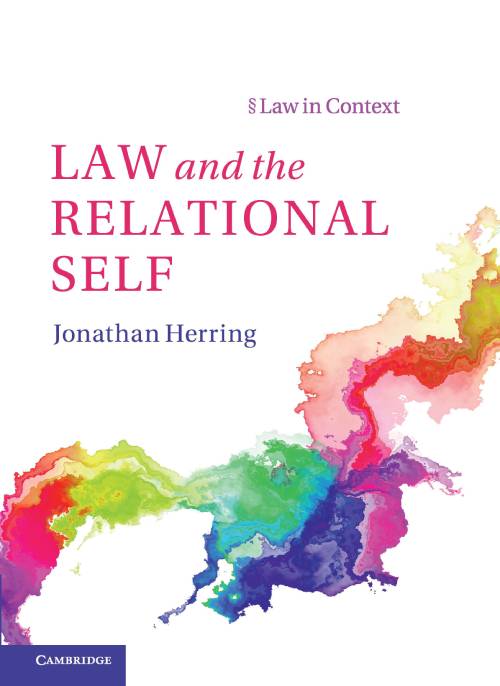
He cites law relating to children as a good example of this. The law currently enshrines the welfare of the child alone as the criteria by which judges should make decisions. This sounds sensible enough until you think about the relationships at play. If what seems best for a child isn’t best for their relationship with their caregiver, it actually isn’t going to be very good for the child after all.
We imagine we can think about the interests of children as separate from their parents, but that is a fiction … It would be better to ask what order will promote good caring relationships between the child and their carers.’
Or we can look at contract law. Effectively, it sets up an “us vs them”, with little obligation to consider what is fair for ‘them’. Whereas Jonathan argues that ‘a contract law designed to promote caring relationship would put obligations on contracting parties to look out for each other.’
A lot of the ideas in the book are informed by his previous work, but it was becoming a parent that crystalised all those ideas into the concept for Law and the Relational Self. Not, as you might expect, because of how a child requires care of its relationships to thrive (that one was a given). Instead, what struck him was how much emotional support children give to their parents.
He describes the experience, saying: ‘Parenthood vividly showed me how false vision the ideal of the "autonomous self-determining free man" is. That seems to be the dream that the law seeks to preserve, but to me it now looks like a nightmare. All the things in my life that give me joy are things that undermine my autonomy. But those are all good things. And I think is true for most people.’
This vulnerability is at the core of the book. We define ourselves by our relationships, and our relationships make us vulnerable, so it follows that…
‘Being vulnerable is an essential characteristic of being human. We might think that as adults we are able to "look after ourselves", but we rely on farmers and shops for food. We rely on friends for meaning and our mental health. We need a whole array of people, from doctors to sewerage workers, to maintain our wellbeing.
‘The strange thing is that society often presents it as a bad thing to be vulnerable and to need care. Carers are some of the most undervalued workers in our economy, when they should be celebrated.’
Professor Herring also highlights how that vulnerability means we sometimes need support from the law when something goes wrong: ‘The importance of care also shows how harmful abuse within an intimate relationship is. If intimate relationships define who we are and, indeed, are key to our survival, then abuse with in them is a "crime against the soul." One of the great strengths of relational theories is that it can highlight the particular evils of domestic abuse.’
A lot of what he says about the book seems to be a question of how the law reflects what we value. To change the focus of the law, would thus give us better building blocks to support a society of caring relationships.
What would such a legal system look like and what would it say about our values? Professor Herring says: ‘At the moment, whether one listens to debates about the impact of Brexit or the arguments among politicians, it would be thought that economic productivity is the mark of a successful society.
‘But what if our schooling, our labour market, our health care system, our political decisions were shaped around asking ‘what will promote good caring relationships?’ This would have huge ramifications for employment practices, tax systems, benefits payments. Being a carer would be an accepted part of being a citizen. The legal and political system would be built around that as a norm rather than, as it is at the moment, being seen as a problem if a worker is a carer.’
In the end, Law and the Relational Self is a book about what we decide important and how we reinforce that. It should be a great read for anyone with in interest in law and how it shapes us.
Jonathan sums it up by saying: ‘We know that making money is not what is important in life. We know our lives are not just "ours" to live as we like, but are made up of responsibilities which constrain our freedom, but that we choose because they are of huge importance and value. We know that what is important is our interactions with others, the smile, the touch, the kiss, the giggle together. That is what matters, not the high sounds principles of autonomy and freedom which dominate the law.’
The latest in our ScienceBlog series of 'amazing people at Oxford you should know about' is Dr Pavandeep Rai. A Post-doctoral Research Scientist in the Department of Physiology, Anatomy and Genetics, her work focuses on the effect of something called 'mitochondria' on Parkinson's disease, using cutting edge gene-editing cool CRISPR-Cas. Here she guides us through her career and experiences of pushing the boundaries of science in both research and art...
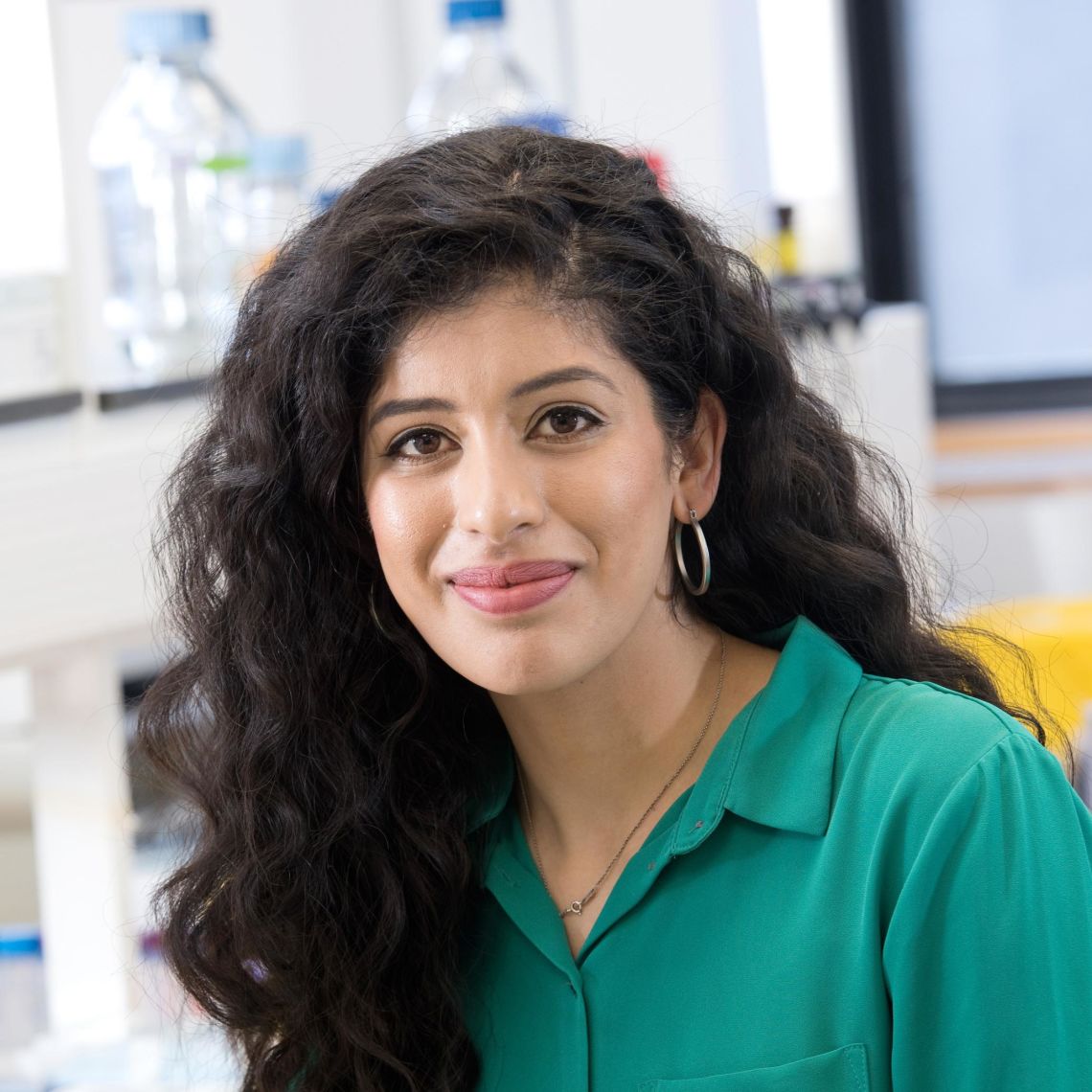
To start with, can you give us a beginner’s guide to your research? What is ‘mitochondria drug discovery’?
I started my ‘love affair’ with mitochondria during my undergrad degree at Birmingham, particularly in my year in industry with AstraZeneca. Basically, mitochondria are organelles, small entities within our cells. Their main job is to make something called ATP, which is the energy our cells use. So, if something goes wrong or your mitochondria start to degrade, then that will reduce the amount of energy and your cells don’t work as well.
The lab I’m working in looks specifically at Parkinson’s disease. By looking at the mitochondria, we can try to find ways to improve their functionality. Can we stop them from degrading? Once they’ve started, can we stop them from getting worse?
Currently, I’m using genetic editing tool called CRISPR-Cas. It’s been in the news recently, you might have seen those stories about ‘designer babies’ and the like? But we use it as a research tool to see how removing genes from the genome affects mitochondria.
If we remove a gene and it improves function, then we could maybe use it as a treatment for Parkinson’s.
If removing a gene decreases function in healthy cells, then that tells us something else. Perhaps this is one of the ways that the disease itself progresses?
So, it ties into two aspects of research: one is treatment and the other is understanding.
How’s it been so far to use CRISPR-Cas and the general discourse around that?
It’s one of the most innovative areas at the moment. We’re seeing huge advances. Previously, we were only able to completely physically remove genes. Now, we can ‘silence’ genes by turning them off temporarily. This means we can do a kind of ‘before and after’; what happens when we turn the gene off? And what happens when we turn it back on again?
The technology is getting more specific and detailed all the time, too. I think it’s going to become a really huge therapeutic area in future.
For example, there are clinical trials being run into diseases like Sickle Cell. With diseases like that, where you have one specific gene that’s ‘switched wrongly’, you could eventually use it to just flip the switch the right way.
Meanwhile, for Parkinson’s, we’re using it more as a tool to look for helpful molecules for treatment.
Any thoughts on that wider discourse around gene editing?
In the research community, it is very much a tool for research and very specific treatments. That said, people will always use tools for things they aren’t designed for.
When I was at Newcastle, they were working on mitochondrial donation or ‘three parent baby’ research to treat mitochondria disease patients. It’s tightly regulated here. But in other places around the world, it’s being used to treat women with low fertility, or to treat other diseases.
Like any tool, you create it for the general good. Then you have to keep facing those ethical and moral issues in the future. I recently went to a conference in the US, which highlighted these issues. So that’s one way for the research community to ask important questions about guidelines and regulation.
To you, what’s the most exciting thing about the work you’re doing?
For me, it’s using CRISPR-Cas to really understand disease. There are still so many questions that need to be answered and these tools are advancing our understanding massively. Every other month there’s news about new genes and pathways.
And I think the work of the Oxford Parkinson’s Disease Centre (OPDC) is really important, especially because of its excellent collaboration with patients. We have a lot of cell lines available to us, and using these stem cells we can grow them to form neurons. Working on actual neuronal tissue makes a huge difference for modelling the complexity of the disease. Along with the new techniques of CRISPR, that puts the OPDC in a leading position world-wide.
What are the big benefits of patient involvement and contribution?
There’s a huge impact! One of the reasons a lot of companies like to work with research institutions in the UK is that our research is tied to institutions like the NHS. There’s a great referrals system to get patients together and get them organised. And the patients just really want to help us and to see progress in therapy development.
There’s fundraising too, not just for the big charities, but also from local patient groups. They have things like a pub quiz to help raise money so we can buy lab equipment.
They also donate stem cells, do clinical trials and make samples available to us, which helps with diagnosis. Their families offer support too! It’s an awful disease, but it’s a powerful community.
What are some things about working in research and science that surprised you or might surprise others?
The more you research something, the more questions arise. That surprises me.
I think there’s this perception of scientists as people who have all the answers, but actually we just have all the questions! It’s all about asking the right questions and finding out how to answer them, rather than finding the answers themselves.
You’ve worked in Newcastle, Birmingham, and now Oxford. What have been your favourite things about those places?
I’m originally from Kenya and when we first moved from there, we had family in Birmingham. So, I went to nursery in Birmingham and still have family there, so I’ve always had a soft spot for it. I’m a midlands girl at heart, and now I live in Leamington Spa (which is a much trendier place now than the small town I grew up in).
When I did my year in industry, I lived in Manchester. I loved the north! And I made great links with a community of scientists who were also on the placement programme with my at AstraZeneca.
Then I moved to Newcastle for my masters and PhD. It has a great quality of life; you’re near the coast, near 3 national parks, and you can walk everywhere. Plus great food and nightlife, so definitely a ‘work hard, play hard’ PhD. My PhD mentor was also very knowledgeable, he was a clinician neurologist, so he really drove home the patient focussed aspect of research.
Then I saw this post-doc in Oxford with Richard Wade-Martins. It was in the area of drug discovery, which is a great fit. Plus, it’s a great lab with amazing resources and research, and the people here push you to be at the forefront of new techniques. So, all of that drew me to Oxford. And then I arrived and thought ‘Oh, Oxford’s so nice!’
You mentioned your PhD mentor was a pretty big influence – were there any other people or events that inspired you and shaped your work?
My year in industry was also really formative, finding out what commercial research looks like. I also worked at the Novartis Institute of Biomedical Research in Basel, Switzerland during my PhD, where my collaborator was keen to give me experience of all the different stuff going on there. Commercial science is very goal-oriented, so you get these huge institutions working together really well to get results to for compounds and allow products to be delivered to the market.
I’m beginning to explore the idea of business in my research too, like a start-up or spinout. Oxford is a great enterprising hub, with lots of support like Enterprising Oxford. I’m part of a cohort called RisingWISE, which helps 40 women from Oxford and Cambridge develop creative, innovative, enterprising skills. It’s also great for meeting women from industry, gaining mentorship and networking
I’ve recently also been accepted onto the Ideas 2 Impact programme at the Säid Business School. This initiative recruits Postdocs to join the Strategy and Innovation module of the MBA programme, giving Scientist and Executives the opportunity to work together on business ideas. I am really looking forward to starting this in January.
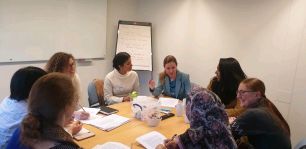
Any ideas sparked for a spinout already?
I’d love to have one, but not yet! At the moment for me, it’s about building that skillset and that mind-set to think about research in that commercial way. As a researcher we’re already analytical, and setting up research groups or labs is already a bit of an entrepreneurial prospect. But you also need to flex those creative muscles.
Are there any other difference between academia and industry, or things they can learn from each other, that it’s important to highlight?
I’ve always seemed to be part of collaborations between the two, which I think are becoming more and more normal. They have this really good balance between them. At the end of the day, industries are keen to make their bottom line, to find a compound or therapy that will cure a disease but also make a profit. Academia is more about the minutia, going back to basics and saying ‘okay, what does this protein do?’ rather than jumping to ‘what could it cure?’
And sometimes maybe academia gets a little stuck in its rut? It can be too focused and detailed-oriented, with researchers hidden away in our laboratories. And I think industry can sometimes be not detailed enough, as they’ve got deadlines and money and time constraints.
So these collaborations are a really good middle ground. They help researchers be part of something bigger and impact-focused, but gives industry the ability to really understand therapies. And this makes for better drugs!
Any other moments in your career you’re proud of and want to celebrate?
I think handing in my thesis for my PhD, probably! That was tough!
I have loads of small things I’m proud of – I’m proud of supervising students and seeing them flourish. I’ve supervised a lot of medics who’ve come in with no experience of holding a pipette, and by the end of things they were giving me ideas for their project and learning independently. So, I think training is a really important aspect of science as it can go both ways.
And being part of collaborations that have meaningful impacts on patients! Having a career with a cause is important to me.
Can I ask about experience of being a woman and minority in science? What would you like to see put into place to encourage people into STEM?
As a woman, it’s interesting! There’s lots of women in science, especially biology, but less in other STEM areas. Why do so many of us go into biology? I reckon that has something to do with how we’re raised.
I think it’s retention that really suffers, across all subjects. I’d like to see us asking questions like: where are people dropping off? When are they changing careers? What are the barriers making it difficult? Is it the temporary nature of academic contacts? Do we need to rethink how we deal with childcare and maternity leave?
Being a woman of colour (I hate that phrasing, by the way, but it’s how it’s said), you don’t have many role models; not a lot of professors look like you. There’s a community aspect too; where do you feel like you belong? I’ve been in several situations across various jobs where I’ve been the only woman and person of colour in the room. I never really thought to question it until recently.
I don’t think addressing that is a quota-filling task. I think it’s about going into communities and starting with the grassroots. Where are we employing people from? How do we expand to recruit from new communities, schools and universities across the country and world?
Also, I think unconscious bias has a huge part to play. In this country, it seems like some people think that when you don’t see overt racism, then it doesn’t exist. I think it’s more subtle and more nuanced, which makes it hard to challenge. We all have biases we don’t think about, so that kind of introspection is really important.
What is one really interesting thing that you’d like everyone to know?
I’d like people to know how close connections are related to healthy longevity.
Aside from exercise, good meaningful relationships are the best thing for long-term health. So go and make connections, volunteer, enjoy your hobbies and just make time to meet like-minded people. Friendship – it really is the key to a long and healthy life.
If you could work with any scientist, living or dead, who would you want to work with?
The scientist I would most loved to have met is Wangari Maathi. She was born in Kenya (as was I, so very close my heart) and after winning a scholarship to study biology in the US, she was the first woman in Central and East Africa to gain a doctorate. She recognized that deforestation was causing a decrease in biodiversity and food crops, affecting mainly women who are the resource gatherers in many African communities. She founded the Green Belt Movement which paid local women to plant trees. The Movement grew to encompass almost a million people and had major political ramifications in Kenya.
In 1990 she set up her own political party and won the Nobel Peace Prize in 2004.
I think Dr Maathi’s ability to apply her science to a grass roots problem and make rapid impact in improving the lives of people in her community is incredibly aspiring. I would love to be able to do similar work in the future, using my background in biological research to bring about positive changes in healthcare for individuals.
You’ve also done some really interesting outreach work in the past, right? Can you tell me about that?
Yes, I have a longstanding interest in getting scientists out of their labs and involved in other areas and in communities.
In Newcastle, we had a collaboration with a Fine Art course, creating installations that drew on all kinds of science themes. We then went on to work with the National Trust’s Women in STEM project, with award-winning artist Olivia Turner. We created these amazing 6-foot wooden sculptures that are now on display in the Cheeseburn Sculpture Park.
I’m very keen to re-establish that kind of project in Oxford, too! I’m meeting and liaising with various groups, so watch this space.
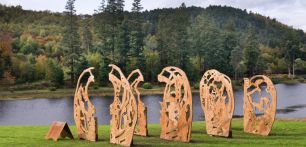
As shopping surged over Christmas and now into the January sales, it has been one of the busiest times of the year online. Yes, Santa, the high street, and Amazon have all been doing overtime … and so, each year, does cybercrime. (You may, indeed, have caught the recent credit card hack over at Macy’s.)
So what can we do about cybercrime? To answer that, you need to understand it. Enter Dr Jonathan Lusthaus, Director of The Human Cybercriminal Project in the Department of Sociology, at the University of Oxford. Dr Lusthaus has spent the last seven years researching the hidden details of cybercrime. His book on the subject, Industry of Anonymity, is published by Harvard University Press. He’s also written on the subject for range of periodicals including The New York Times and The New Statesman, and been interviewed by the Financial Times’s Tech Tonic podcast and the a16z podcast..
In those years of research, he interviewed almost 250 people. These included law enforcement agents, security professionals and former cybercriminals. Speaking about the people he met, he remarked on how normal this new kind of criminal seems to be: ‘I was able to interview a number of former cybercriminals from a range of countries. There are a lot of interesting characters out there, but ultimately they are just people like the rest of us. Many of the former offenders I spoke to were intelligent and engaging.’
What drove him to find out so much about this world? Originally, he was planning to research religious violence, but found himself fascinated by cybercrime after a talk on the topic from the journalist Misha Glenny. With the subject becoming a growing obsession, he kept researching, doing his doctorate on the subject under the supervision of Federico Varese, a leading authority on organised crime.
A picture emerged of an industry that was strangely distant from traditional organised crime. Many cybercrime ventures seemed to function much like other online businesses, only they happened to be illegal. Out of several surprises that Dr Lusthaus uncovered, he recounts one of the most eye-opening as: ‘What surprised me most about the cybercrime world was how many of the offenders know each other in person. When I began this research almost a decade ago, I assumed this would be almost a purely virtual phenomenon. But the more I dug into it, the more I found cybercriminals who met online and then met up in person, or groups of people who knew each other in person already and then started to work together on an online scam. Sometimes this can be very much embedded in local communities and environments. This offline and local dimension is particularly fascinating and something that Federico Varese and I are continuing to investigate.’
Maybe it’s that knowing each other in person builds trust? Or perhaps it just makes it easier to organise if you’re not doing it all online? Indeed, in some cases, Dr Lusthaus found that some cybercriminals went so far as to invest in office space. They would even organise themselves along corporate hierarchies, with managers, specialist roles, and marketing teams. It turns out that in the cybercrime marketplace you still need someone to advertise your services.
If the way cybercrime can flourish seems oddly entrepreneurial to you, then you’re starting to identify one of what Dr Lusthaus sees as the key factors behind it. Some of the areas that tend to become cybercrime hubs are places with very strong technical education, but not enough jobs to support all the resulting talent. Lacking employment opportunities or legal avenues for start-up investment, some people turn to cybercrime as a quick way to use their skills to make ends meet.
But not all cybercrime hotspots are the same. There’s a lot of variation tied to the resources and skills available in each area, which then feed into local criminal specialities: ‘The former Soviet Union is one well-known hub for cybercrime. It is known for the most technical types of cybercrime, like malware production. Other key hubs include Romania, Nigeria and Brazil. These often become associated with different kinds of cybercrime. For example, some would say Romanian offenders are famous for "online auction fraud", which involves selling fictitious products online.
‘Nigerian fraudsters have entered so many people's lives through those (sometimes far-fetched) emails offering strangers part of some fortune if only they can provide a small amount of money to unlock it. This is known as "advance fee fraud". More recently, these offenders have evolved and now engage in other scams like impersonating CEOs and other company officers to authorise fraudulent transactions. Of course, we also can't forget about the West, which has a lot of cybercrime offenders engaged in the money side of cybercrime, "cashing out" virtual gains into physical or monetary ones.’
So, what can we do to combat cybercrime in these areas? Various experts, including Dr Lusthaus, have suggested it’s not a problem we can arrest away. Instead, it may be an issue we can invest away:
‘While we lack data and rigorous study on this, I suspect a number of future cybercrime offenders could be diverted into legitimate work. The UK's National Crime Agency is leading the way globally with cybercrime prevention programs. But the real need is to internationalise diversion programs beyond the West and target them to the hubs that produce the most effective cybercriminals, like Eastern Europe. This means creating more opportunities in places where very capable individuals are being pulled into cybercrime because there aren't enough good jobs to support them. The private sector can potentially play a huge role here.’
If you want to learn more about cybercrime, you can find the details of Dr Lusthaus’s book and various articles on the Harvard University Press site. But if there’s one key thing you should know about cybercrime, he thinks it should be this one: ‘Cybercrime is not as shadowy as people think. It's important not to view cybercriminals as exotic. Mystifying them makes it harder to develop solutions. I think approaching cybercrime in "human" terms is really important to addressing the problem in a more holistic way. It is not just a technical challenge.’
Associate Professor Robert Weatherup is a new arrival in the Department of Materials. Continuing our series of ‘amazing people at Oxford you should know about’ ScienceBlog talks to Rob about his research in ‘interfaces science’ and the advances he’s working on for batteries, electric vehicles and sustainable technology.
You specialise in ‘interface science’. For the uninitiated, like myself, what does that mean?
Interface science is hugely important, but at the same time, it’s difficult to understand. When two surfaces meet, it’s where a lot of interesting chemistry happens.
If you think about your material, you have the ‘bulk’ and the ‘surface/interface’. The ‘bulk’ is where we have most of the material, all the atoms in ordered rows. It’s fairly easy to predict how that will behave. When you have two materials interfacing, you have a lot of that bulk on either side. And that gets in the way of trying to measure them.
The problem comes at interfaces where the surface interacts with other things. And that’s where it gets trickier.
For example, my work on batteries. In a lithium ion battery, you have an electrode in contact with liquid electrolyte. The reaction you want to happen is for lithium ions to travel from one electrode to the other. But you also get side reactions, like electrolyte decomposing or your electrode dissolving. These side reactions are why batteries stop holding as much charge. Like you see after about a year of using your phone, the battery just doesn’t go as far as it used to.
We want to be able to measure down to really small levels, like nanometre or even angstrom sensitivity at these interfaces. That means developing special techniques to do that.
And what kind of impacts and innovations can we expect to see coming out of this area?
Look at electric vehicles. People want the same kind of performance from electric cars as with petrol. They want it to last at least 10 years, have similar performance, and comparable cost. Two of the big problems with batteries at the moment is that they’re expensive and their total lifetime isn’t long enough.
If we can take that really close look at what’s going wrong, using some of these new techniques, we can try to find solutions for some of those problems.
What have been some of the milestones of the career that’s brought you to Oxford?
At heart, I’m a problem-solver, that’s why I got into engineering. So solving the problem of longer-lasting batteries, even a bit at a time, is exciting.
I did my PhD and undergraduate degree at Cambridge, in Engineering. I stayed to do a research fellowship, then I went to Berkeley in California for two years on the Marie Curie Fellowship, which was my route into looking at batteries.
To begin with, I was working on electronic devices, but then started to look more at the materials, like graphene.
Over in Berkeley they have a synchrotron facility that allowed for some really high sensitive techniques to look at those materials. A synchrotron is a big donut-shaped building where they spin electrons close to the speed of light to produce x-rays. I’ve spent a lot of my career hanging around different synchrotron facilities.
Basically, you use x-rays to illuminate the material you’re looking at. Then you can see the photoelectrons coming off it, which tells you a lot about its surface chemistry.
Using thin materials, like the graphene I’d been working with, I found a way to use this to look at higher pressure materials. For example, like the liquids you might find in batteries.
After Berkeley I went back to Cambridge and then I moved on to Manchester. For my research there I started working with the diamond synchrotron in Harwell, near Oxford, and that’s part of why I’ve ended up here.
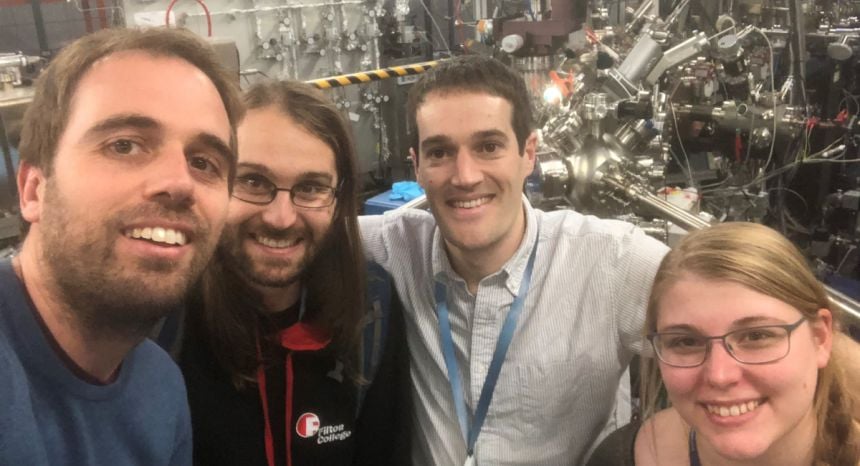 Rob and his team of colleagues at the Harwell Synchrotron
Rob and his team of colleagues at the Harwell SynchrotronSo, you did your undergrad and PhD at Cambridge, you’ve also worked in Berkeley and Manchester, and now you’re at Oxford. How have you found moving between those places?
The US system was very different. Partly because I was going from a university system to a national lab. It was a lot more open, both in discussing ideas and sharing equipment.
Though, on return to the UK, I’ve found universities have moved in the same direction. There’s been a successful push to open things up and make resources more widely available.
Coming from Cambridge, did you get any light-hearted grief from friends for coming to Oxford? And how have you found Oxford, generally?
I did. But I got my just desserts I think, because I did some of that joshing when I was at Cambridge. We had a few people who had come from Oxford, so I was winding them up about that. And then they took it upon themselves to remind me of this when I turned the other way.
A lot of things are superficially very similar between the two, of course. I have to adjust my language, sometimes I’ll find myself in the middle of tutorials talking about ‘supervisions’, so some little things take a while to get used to. But I’m getting there!
They’re both great places to do science, so there have been no major surprises and I’m settling in well.
One of your big projects is the ominously titled ‘What Lies Beneath’ with the Faraday Institution. Tell us about that?
That one has only really just started. The funding came through just before I came to Oxford and we’ve just had our first post-doc start with us about a week ago here. What’s nice is that Oxford has lots of battery research, equipment and colleagues (like Peter Bruce and Mauro Pasta) to lend expertise.
That project still involves a collaboration with Manchester and with the Diamond Light Source at Harwell, so we’re keeping strong links with that excellent facility and I have some students based down there.
And what’s the overall goal of that project?
We are trying to look at the interfaces in batteries, which are buried. That ‘bulk’ I mentioned earlier? That hides a lot of the reactions.
So we’re looking at both solid state batteries and liquid cells, working to understand those lifespan issues.
Solid state batteries are where you have solid electrolytes. Those aren’t really commercially available yet, but they have very high energy density and can also be safer as the electrolytes aren’t flammable. But when you have these two thick solids, it’s even harder to probe. So we’re looking at ways to thin down the electrodes, and also looking deeper and using ‘hard x-rays’.
This is the first time this is being done with working batteries. Previously, you’d pull the surfaces apart to get a better look, but the chemistry is changed by separating them.
So you can’t look at what’s happening while the battery’s charging or discharging.
And what might the impact be of this kind of research? How’s it going to change how we look at batteries and electric vehicles?
The blue sky part of the research is new techniques to get a closer look at the interfaces and chemistry.
Practically, we hope to understand why we’re getting degradation in higher capacity materials.
There are new materials that could provide better performance and be cheaper. But they may also be less stable and interact in new ways with the electrodes, so we really want to understand why that is.
And these are batteries that are close to market already, so it can have a real impact on the industry.
You grew up in Chelmsford, right? Would it be okay to say a little about your journey from there to Cambridge and then to here? What got you into engineering?
I was born in Chelmsford and went to the local grammar school. Chelmsford’s actually where Marconi founded his first radio factory. So a lot of the local industry was related to telecommunications.
What got me into engineering was a very passionate design and technology teacher, who had a keen interest in electronics. She was really good at running after school activities that were great for involving you and keeping your interest up. She was one of the most defining teachers I had, definitely. She encouraged me to get involved in a local engineering scheme as a hobby too, and to seriously pursue a path to a career in the field.
It probably helped having a dad who was a physicist and worked as an electronic engineer for a local company too.
Oxford has a rich history of work on batteries, with John B. Goodenough, who pioneered the Lithium Ion battery, recently being awarded a Nobel Prize. How does your work build upon that history?
Absolutely. We’re working with very similar materials. The cathode materials we’re still looking at, 30-odd years on, are still based on that structure, tweaked for higher capacity.
He had a huge impact on the commercially viable lithium ion battery and his work is still very pertinent to the real batteries we’re working on.
Many of his former students and colleagues are active at Oxford; there’s Bill David in Chemistry here, who I work with at Diamond, and Peter Bruce here in Materials as well.
Obviously, electric cars and thus lithium ion batteries are a hot button topic at the moment, any insights on what the future holds for them, based on your work?
Not just my work – look at government policy. We’re committed to all cars being zero emission by 2040. Electric vehicles look like the most promising solution. Which is why things like the Faraday Institution have been founded.
In terms of what we’re doing, we want to make these new higher capacity materials viable for the next generation of batteries, to make them more stable and offer longer lifetimes. We expect that in about 5 to 10 years that these new materials could be used in real world batteries.
For solid state batteries too, I can’t give an exact estimate, but it could be up to 20 years before we see them used in cars or phones. But we could see them used in smaller portable devices sooner!
Talking of timescale, what do you think we’re looking at for when electric cars might meet people’s expectations, compared to petrol?
You’re not going to wake up overnight and find that suddenly batteries have twice the capacity. But those kind of advancements are coming, and our work is helping get there.
Gradually those little steps will keep building up and they’ll become cheaper, they’ll last longer and that kind of thing.
The more unpredictable thing is if we’ll have a breakthrough where suddenly we find a new kind of material that will completely change the game.
Obviously, I can’t say when or even if that will happen, but it’s the kind of thing that can only happen if we do the research and better understand what’s going on with the materials.
What one thing about your research we haven’t covered yet that you think is important and interesting?
Beyond the batteries, we’re working on how we might be able to make other technologies to be more sustainable. For example, the synthesis of fuels and chemicals.
There’s an increasing interest in this idea of green chemistry. So, how do you capture waste products from industry or vehicles (like CO2) and turn them into something useful? Basically, how do we close the ‘carbon loop’?
This will be one of the few ways to make some technologies sustainable – but we’re not going to see batteries powering planes any time soon.
Where do you want your career at Oxford to take you? Where will this research take you?
Firstly, I’m hoping to build up the strength of my group to address some of these problems! Oxford’s full of like-minded people, so it’s a great environment to do that.
And I’m hoping some of the techniques we’re developing, will really give the validation that we’re doing important work.
And what would you say to people considering studying engineering, electronics or materials?
‘Do it!’ I think people should definitely consider it if they like problem-solving and understanding how the world works.
In terms of personal qualities, you need a lot of resilience and persistence. The nature of research is that things often go wrong and it’s easy to give up and call it a day, but often those are the times where, if you just keep going, you can make it work or learn why it wasn’t working. So many of the things we’ve understood in history aren’t from well-designed experiments that went well, but from when they didn’t go well. Just keep pushing on.
The Ashmolean's 2019 exhibition explored ancient Pompeii. The exhibition has closed, but conservators continue to uncover the hidden histories of 37 previously untouched objects.
After a fascinating morning in the Ashmolean’s conservation labs, I find myself wandering through the Last Supper in Pompeii exhibition. Viewing the many wonderful exhibits with a renewed wonder for the conservation work that’s gone into them, my eye is drawn to a statue of Apollo towards the end.
It’s a gorgeous bronze piece, but this time that’s not the principle reason for my interest. The label tells me that it was later adapted for use as a tray holder during meals. For a moment, I ponder what the famously capricious deity would make of having his statue modified in such a way.
But for the most part, I’m caught by how it found a second life at the banquet table.
This is perhaps the biggest thing I took away from my visit to the labs. The Ashmolean was given 37 items from the Pompeii Archaeological Park’s archive. None of these had been outside Pompeii or seen significant conservation work before. As such, this represents a unique collaboration. And each object, especially those which have seen lots of practical use, tells a story.

Conservation Manager Alexandra Baldwin was kind enough to talk me through the various techniques used to analyse and conserve these objects. This is how they fight back to keep items in the best state possible. It’s also how they tease out the details that help us map each object’s journey.
Spread out on the tables in the lab are various copper pots, bowls, jugs and other vessels. Alexandra tells me that finds like these are quite rare. Due to the intrinsic value of metal, such items wouldn’t be thrown away, but sold second hand, repaired, reused and eventually melted down and remade.
But it’s exactly this long and varied lifespan that makes these objects so interesting.
There are two places you tend to find metal objects like this. The first is sites of ritual deposition, like burials. The second is places that have been struck by sudden catastrophe.
It’s only in those sites of catastrophe like Pompeii and Herculaneum that we find items that were still in use. So each nugget of information uncovered about these objects – from dents to organic residue to location found – tells a bit more of a story.
Take, for example, one of the especially fine pieces they’ve restored for the exhibition: a copper bowl with an intricate ram’s head handle and delicate silver inlay. To my untrained eye, the handle carving especially is gorgeous. This ‘patera’ was likely used for ritual hand-washing.
Slowly and painstakingly, Alexandra clearing away the detritus of the years with the help of delicate surgeon’s tools and binocular microscope. Alexandra and colleague Stephanie Ward (Objects Conservator) told me that as the fine details emerged, it became clear this was one of the finest pieces they’d seen.
Which is actually a little odd, given all these objects were excavated from one of Pompeii’s backstreet taverns. Hardly the venue you’d expect to find a well-crafted piece like this.
Looking over the maps of Pompeii, Alexandra pointed out landmarks like main roads, temples and the amphitheatre. It’s just round the corner from this site of various state-sponsored games and gladiatorial matches that the tavern is located. With a spacious garden, even including a small vineyard, it seems like it would have been a very pleasant location to pass an afternoon eating with friends. Given most ordinary Pompeiians wouldn’t have had their own full kitchens, take-away and dining out would have been a pretty regular part of their diets. So, how did such a fine piece end up in a run-of-the-mill eatery?
Further analysis (including x-rays) revealed the dents and damage the bowl had sustained. You might expect a bowl from Pompeii to be a bit worse for wear, but these were marks from before the eruption of Vesuvius. Given this clue, it seemed that this piece had probably been previously owned by a noble household, then damaged and sold on. Eventually, it made its way to this downhill tavern to be used by a multitude of regular citizens.
When the objects arrived in Oxford in several bright blue packing crates, the conservation team thought it would be a relatively straightforward job. They certainly weren’t expecting the various surprises and discoveries that their analysis would reveal about the many ordinary lives these objects touched.
Perhaps the biggest surprise was a bowl which, due to its shape, would usually be assumed to be used for ceremonial hand-washing. But during the cleaning process, Conservator Miriam Orsini found strange shapes embodied in the bottom. They looked, perhaps, like insects. None of the conservation team were insect experts, but thankfully the University of Oxford museums are filled with a wide variety of experts.
An entomologist from the Natural History Museum was called in: they identified the remains as common fly larvae and rove beetles.

Insects like these wouldn’t have been interested as water; they’re attracted to protein. So the team could determine that this bowl would have been used for raw meat or fish. Perhaps a scrap bowl or a mixing bowl of some kind? Another example of something that likely served multiple uses over time, each of which unearths another piece of lives that – if not for Pompeii – we’d know very little about.
Walking around the exhibition after seeing the labs, this sense of exhibits as holding secret stories felt incredibly pronounced. A lot of them feel full of personality. There’s the branded murals and fish sauce bottles from one of Pompeii’s nouveau riche fish sauce (‘garum’) barons, clearly keen to show off his humble beginnings. Devotive offerings found in kitchen shrines (close to the hearth that was the centre of the home) also seem to whisper about ancient hopes and prayers.
Amidst the case that contains many of the newly conserved items, we can also see one jar left in the state in which it was excavated. It’s crusted with pumice that grows off the rim like a rocky fungus, and coated with a light blue sheen of volcanic-formed Lapili. It’s a stark contrast to the other pieces, delicately restored to their distinctive copper-tarnished surfaces.

A video nearby illustrates some of the work in the labs that I was privileged to have explained to me. We see, for example, how x-rays revealed the various repairs the vessels had undergone. Some had clearly been fixed up by skilled craftspeople with thin copper strips, riveted on. Others had crude repairs of melted lead poured over cracks. Again and again, these vessels were used and re-used, a constant part of the practical lives of Pompeiians.
So perhaps it’s appropriate that they’re being used here, again, as part of an exhibition that highlights the relationship between a people and their food.
And there’s still more analysis underway. Many of the objects still had traces of organic material (partly thanks to the copper they’re made out of, which kills bacteria). In another collaboration, the Oxford Archaeology and Chemistry departments are currently working together to find out what that can tell us.
Once the exhibition ends (after the last day tomorrow, 11 January), still more work will be done with x-ray and other techniques. It seems this partnership with the Parco Archeologico di Pompei, with funding for the conservation work supported by the Stockman Family Foundation and the Helen Roll Charity, has more secrets to uncover.
Coming up next for the conservation labs at the Ashmolean will be some work on their Ancient Near East collection. Among other techniques, this project will use hyperspectral imaging to uncover more about ancient objects from sites such as Ur and Nimrud. While it’s too early to say what will be discovered, they are hoping that such analysis could (for example) tell us more about the pigments and colours which would have decorated ivory and carved figures, and stone reliefs, bringing a bit of colour back into history…
- ‹ previous
- 44 of 248
- next ›

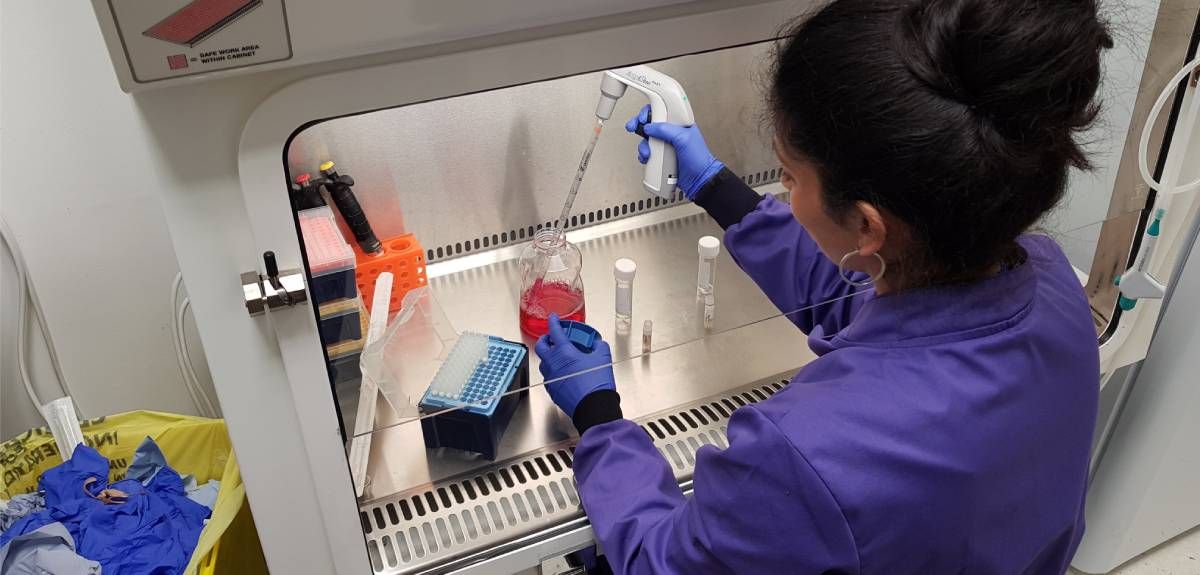

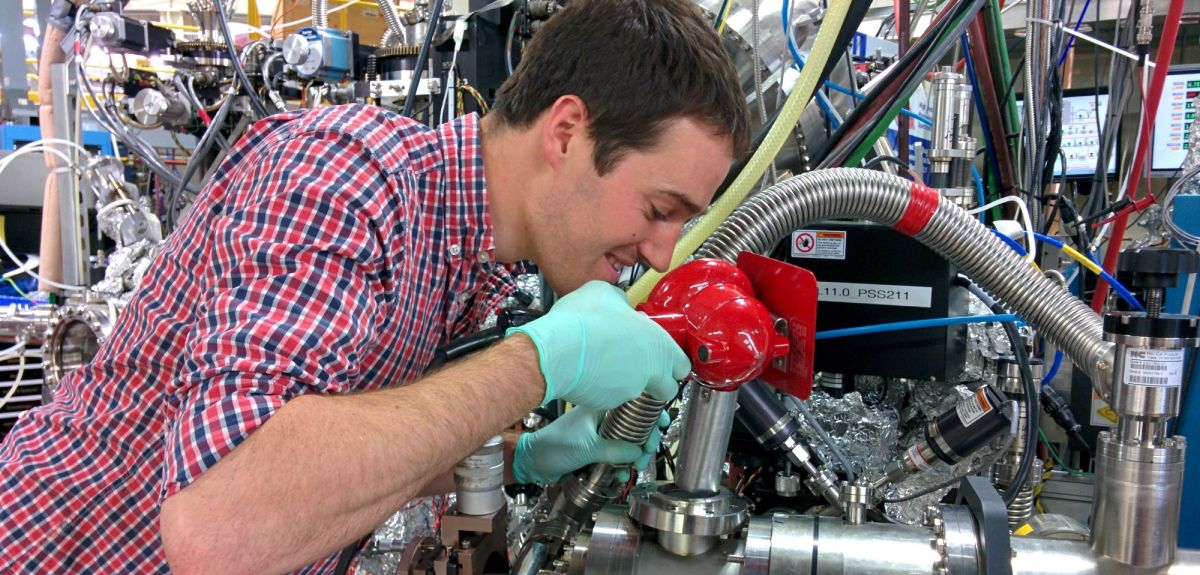
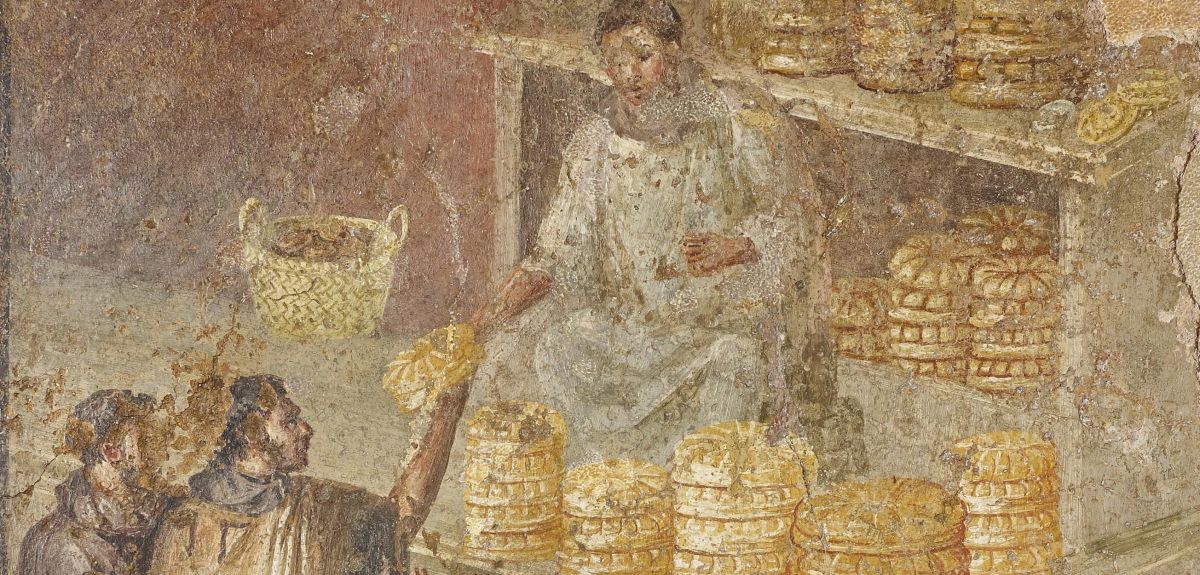
 The Oxford students at the forefront of the fight against microbial resistance
The Oxford students at the forefront of the fight against microbial resistance  The hidden cost of AI: In conversation with Professor Mark Graham
The hidden cost of AI: In conversation with Professor Mark Graham  Astrophoria Foundation Year: Dr Jo Begbie reflects on the programme’s first year
Astrophoria Foundation Year: Dr Jo Begbie reflects on the programme’s first year World Malaria Day 2024: an interview with Professor Philippe Guerin
World Malaria Day 2024: an interview with Professor Philippe Guerin From health policies to clinical practice, research on mental and brain health influences many areas of public life
From health policies to clinical practice, research on mental and brain health influences many areas of public life From research to action: How the Young Lives project is helping to protect girls from child marriage
From research to action: How the Young Lives project is helping to protect girls from child marriage  Can we truly align AI with human values? - Q&A with Brian Christian
Can we truly align AI with human values? - Q&A with Brian Christian  Entering the quantum era
Entering the quantum era Can AI be a force for inclusion?
Can AI be a force for inclusion?